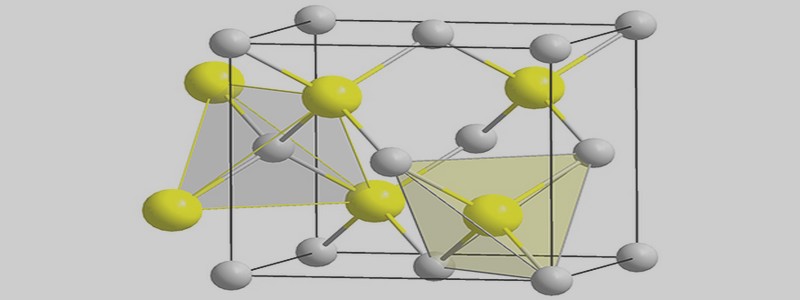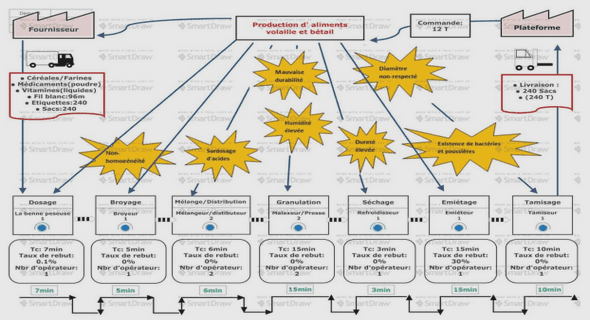L’´électroosmose a travers le nanopore d’-hémolysine dépend du type de
ation alcalin en solution
Electroosmosis through alpha-hemolysin depends on alkali cation type
We demonstrate experimentally the existence of an electroosmotic flow (EOF) through the wild-type nanopore of α-hemolysin in a large range of applied voltage and salt concentration, for two different salts: LiCl and KCl. EOF controls the entry frequency and residence time of small neutral molecules (β-cyclodextrins, βCD) in the nanopore. The strength of EOF depends on the applied voltage, on the salt concentration and, interestingly, on the nature of the cations in solution. In particular EOF is stronger in presence of LiCl than KCl. We interpret our results with a simple theoretical model that takes into account the pore selectivity and the solvation of ions. A stronger EOF in presence of LiCl is found to originate essentially in a stronger anionic selectivity of the pore. Our work provides a new and easy way to control EOF in the nanopore of α-hemolysin, without resorting to the manipulation of the internal charge of the pore. In particular EOF can maintain a βCD molecule logged in the pore for a very long time (several inutes), which may be used as a molecular adapter for DNA sequencing and single-molecule spectrometry. _ + ClLi+ Li+ ClEOF + _ Li+ Cl- EOF + _ V>0 V<0 ∆ ∆ ∆V<0 EOF βCD Keywords: nanopore, α-hemolysin, single molecule, electroosmotic flow, molecular adapter, lithium chloride, selectivity, solvation Electroosmotic flow (EOF) is the movement of fluid through a capillary by the action of an electric field: it was reported by Reuss in 1809.1 Electroosmosis is a timely subject in the nanopore translocation area. In nanotechnology and fundamental biological or physical problems at the single-molecule level, EOF involves in separations of DNA samples, chromosome isolation and in controlling the dynamics of transport of macromolecules through nanopore for fast sequencing of DNA or RNA,2,3 and single-molecule mass spectrometry.4–6 Both protein and solid-state nanopores are under investigation for probing the effect of EOF on the transport of small molecules, synthetic macromolecules, DNA, proteins and peptides.5,7–20 Experimentally, EOF can be controlled by the electrical field, the buffer composition, the thickness of the double layer, the control of surface charges, and the viscosity of the solution.12,13,16,17,21–24 In the case of transport of charged molecules through charged nanopores there is a combined action of diffusion, electrophoresis, and electroosmosis.16 The quantification of the different contributions is crucial for understanding transport phenomena.
Materials and methods
Lipid bilayer is prepared using a classical method33 and separates two compartments filled by a salt buffer. The α-hemolysin nanopore is inserted into this membrane.34 Two Ag/AgCl electrodes 4 allow the control of the applied voltage and the measure of the ionic current. The association and dissociation of small neutral cyclic polysaccharide (βCD, Mw=1135 g/mol) to the lumen of nanopore is detected by using electrophysiology experiments. The βCD molecules are introduced on the trans side of the membrane, the cis compartment corresponds to the one of the reference electrode (Figure 1a). In all experiments, the βCD concentration is 200 µM. We explore a large range of applied positive and negative voltages of magnitude between 30 to 150 mV using a series of buffer solutions of M+Cl− (with M+ = K +, Li+): 0.6, 1, 2, 3, and 4M, 5mM HEPES, pH=7.4. Single-channel ionic currents are recorded by an Axopatch 200B patch-clamp amplifier (Axon Instruments) in the whole-cell mode with a CV-203BU headstage. Data are acquired at 250 kHz with the DigiData 1440A digitizer coupled to the Clampex software (Axon instruments). The data are filtered using an 8-pole Bessel filter at a cut-off frequency of 10 kHz. As our data treatment is based on a statistical analysis, we detect at least 2000 events, using a two-thresholds method; a first threshold th1 is defined by the relation th1 = I0 − 3σ, where I0 is the average baseline current (Figure 1d) and σ is the standard deviation of the open channel. In the histogram of the electric current (Figure 1d), one observes two populations separated by a well defined gap. The largest population (centered at I0) is associated to the fluctuating baseline current. The second one (centered at Ib) is associated to the blockades caused by the βCD molecules (Figure 1c). As both peaks are well discriminated, the second discrimination threshold th2 is determined by the average between I0 and Ib th2 = (I0 + Ib)/2 where Ib being the mean blockades current caused by βCD molecules (Figure 1 c, d). The residence time of βCD molecules, the frequency, and the amplitude of the blockage are estimated statistically (Figure 1 e, f, g). In most cases, each value was averaged over three different single nanopore experiments.


